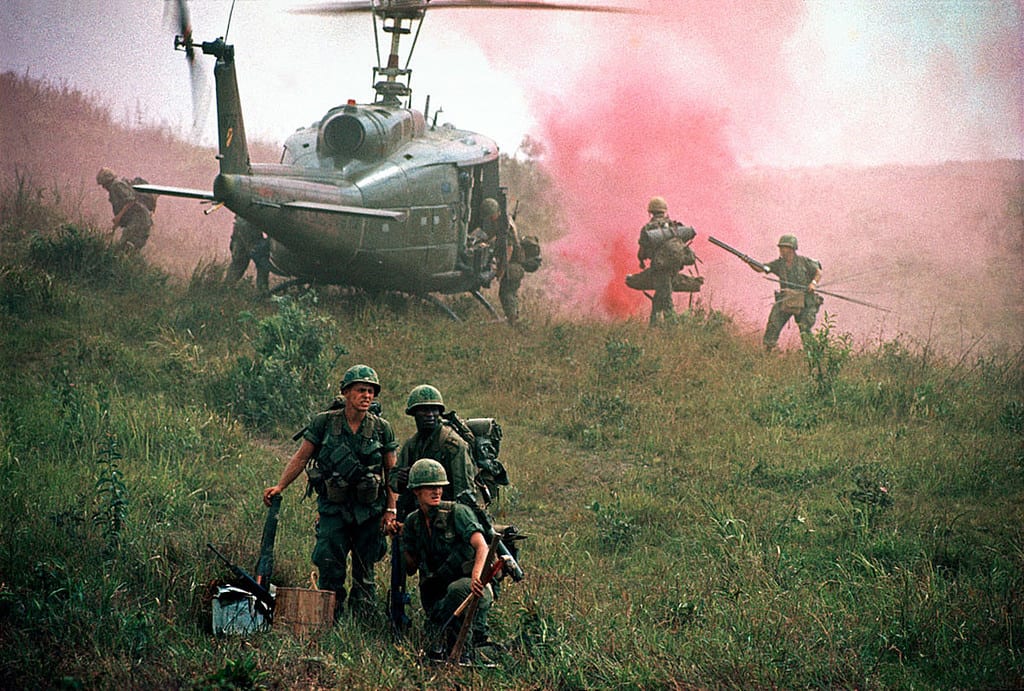The endless war that reached its peak with Lyndon B. Johnson in power and ended with Richard Nixon would lead to countless protests and dissatisfaction with the government.
It’s pretty much impossible to talk about 1968 without mentioning the Vietnam War.
An issue that plagued Lyndon Johnson’s presidency, the Vietnam War, reached its peak at the start of the year. It’s difficult to explain how we got here without knowing the history behind this disastrous war most Americans would rather forget.
Dwight D. Eisenhower was the first president to dip his toe into Vietnamese water by assisting the fixing of elections. The United States had shown its support towards the new South Vietnamese president Ngô Đình Diệm and his “Denounce the Communists” campaign, in which any communists and anti-government supporters were arrested, imprisoned, tortured or executed. He also instituted the death penalty against any active communists in August of 1956.
President John F. Kennedy was the one who heightened the United States’ presence in Vietnam, from just under a thousand soldiers to 16,000 in 1963. In early November 1963, the assassination of Ngô Đình Diệm occurred, which was backed by the CIA as the leader had spun out of control. After JFK’s assassination, Johnson decided to keep the same generals on board that Kennedy had in his cabinet once he became the new president.
By 1964, there were 23,000 U.S. troops involved and even more were added after the disastrous Gulf of Tonkin incident where a U.S. destroyer got involved with the North Vietnamese within the gulf. As a result, the Gulf of Tonkin Resolution was established, which gave LBJ authorization to increase U.S. military presence. Ground combat units would be deployed for the first time and troops levels would reach 184,000.
Near the end of 1964 and after Johnson’s reelection, the Vietnam War was already far beyond control. Although it wasn’t Johnson or Kennedy that was first involved with helping the South Vietnamese against the North, they had both contributed to the increased military involvement by the United States.
Moving forward with an exhausted president, a heightened presence, and protests happening all over the country led us to 1968.
On January 21, the People’s Army of Vietnam (PAVN) began an artillery bombardment of the U.S. Marine garrison at Khe Sanh. This was also located on the main road from northern South Vietnam into the country of Laos. Thus, the Tet Offensive had begun.
In the early hours on January 30, 1968, Viet Cong forces attacked 13 cities in the central area of South Vietnam. This occurred just as families had started their observances of the lunar new year. The next day, the PAVN and Viet Cong hit numerous cities, towns, government buildings, and U.S. military bases scattered throughout South Vietnam in over 120 planned attacks.
The most notable attack would be the raid of the U.S. Embassy building in Saigon. An explosion caused by the Viet Cong blew open a small hole in the wall that surrounded the embassy building, allowing the enemies inside. A group of Viet Cong forces began shooting American soldiers on duty at the time. Eventually, the firing would end as 18 of the 19 Viet Cong members who attacked the embassy were killed once the Americans had received backup.
This was one of the first times American citizens witnessed live coverage of an event that occurred during the Vietnam War. It didn’t help that the raid was planned and the sole destruction of something of their own. The attack was what ultimately shifted millions of people’s views about the war.
The beginning of 1968 also saw the Battle of Hue, an intense attack that would take place for three weeks in the city of Hue. Located on the Perfume River some 50 miles south of the border between North and South Vietnam, the PAVN and Viet Cong soldiers conducted house-to-house searches where they executed any civilians connected with American forces or with the South Vietnamese. Almost 3,000 bodies were discovered and another 3,000 residents were reported missing after the U.S. regained control of Hue on February 26.
The most intense fighting during the Battle of Hue happened at the ancient citadel, which the North Vietnamese had remained in control of against the United States. Nearly 150 U.S. Marines were killed during the Battle of Hue along with 400 South Vietnamese soldiers. An estimated 5,000 North Vietnamese soldiers were killed, most of them due to American air and artillery strikes.
On March 31, President Johnson finally declared he would limit the bombing in North Vietnam and called for negotiations to end the war. He also ended the broadcast with the announcement that he would not be running for re-election as President of the United States that November.
Despite the Vietnam War carrying on past this tumultuous year and into the 1970s, the beginning of the end started in 1968. Multiple attacks that occurred during the beginning of the year set the tone for the rest of the year that followed. The endless war that reached its peak with Lyndon B. Johnson in power and ended with Richard Nixon would lead to countless protests and dissatisfaction with the government.

